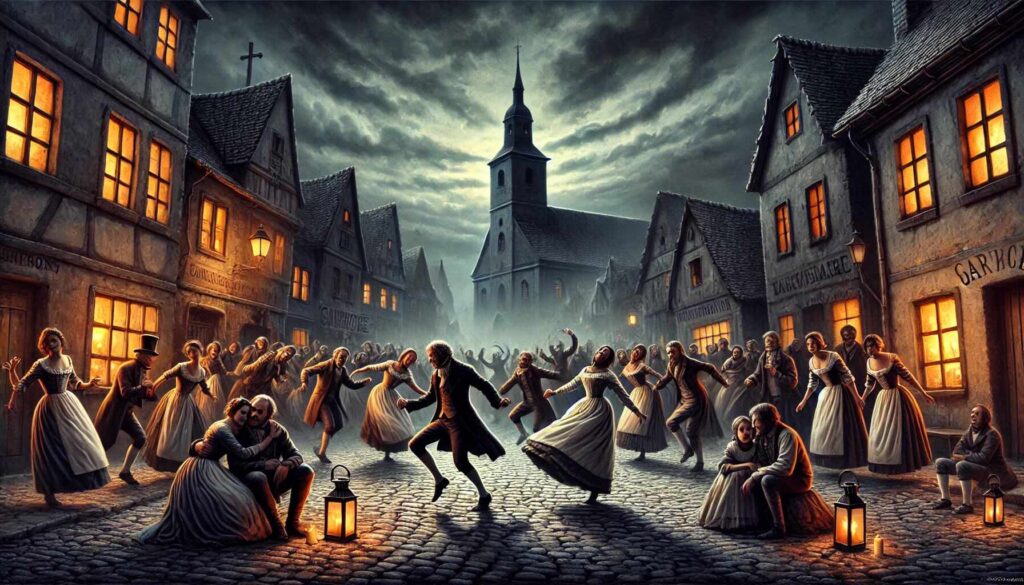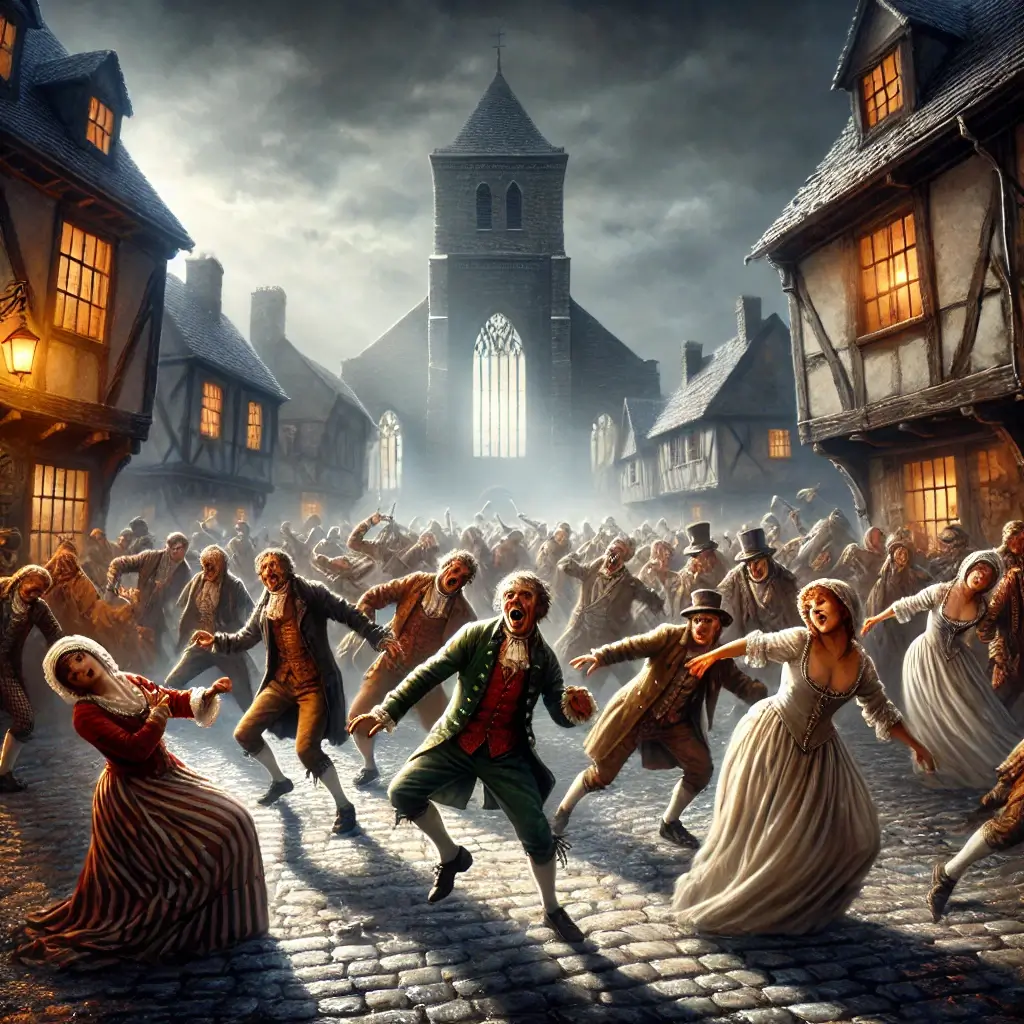Why be normal, when the weird stuff is way more interesting?
A Dance to the Death
In the summer of 1518, the city of Strasbourg was gripped by a bizarre and deadly phenomenon. It started with a single woman stepping into the street and dancing uncontrollably. Soon, dozens joined her, and within weeks, the number swelled to hundreds. The afflicted danced endlessly, many collapsing from exhaustion, dehydration, or worse—some reportedly died. This mysterious event, now known as the Dancing Plague of 1518, has baffled historians and scientists for centuries. What caused this epidemic, and why did it spiral so wildly out of control?

The Timeline of the Dancing Plague
The outbreak began in July 1518 when a woman named Frau Troffea began dancing in the streets. She didn’t stop, and over the course of a week, more than 30 people had joined her. By the end of the month, the number had grown to hundreds. The dancers were consumed by their movements, seemingly unable to control their bodies.
Local authorities attempted to contain the situation by clearing public spaces and even hiring musicians, believing the afflicted needed to “dance it out.” Tragically, these measures backfired, intensifying the frenzy. The plague persisted for months before finally fading, leaving devastation and unanswered questions in its wake.
The Theories: What Caused the Dancing Plague?
1. Mass Hysteria (Psychogenic Illness)
The most widely accepted explanation is that the Dancing Plague was a case of mass hysteria, also known as mass psychogenic illness. The 16th century was a time of immense stress for the people of Strasbourg. Famine, disease, and poverty created a tense and desperate atmosphere. In such conditions, psychological distress may have manifested as a physical compulsion to dance.
2. Ergot Poisoning
Another plausible theory is ergot poisoning. Ergot is a toxic mold that grows on damp rye and can contaminate bread. Consuming it can cause hallucinations, convulsions, and muscle spasms. These symptoms bear a striking resemblance to the uncontrollable movements described in the Dancing Plague. However, skeptics argue that ergot poisoning would have affected individuals differently and might not explain the synchronized dancing.
3. Religious or Superstitious Beliefs
At the time, spiritual beliefs were deeply ingrained in daily life. Some historians suggest that the dancers were influenced by religious or superstitious fears, believing they were cursed or possessed. The cult of St. Vitus, the patron saint of dancers, was particularly prominent in the region. It’s possible that the afflicted believed dancing was the only way to appease the saint and lift the curse.
4. Neurological or Medical Conditions
Rare neurological disorders, such as chorea or epilepsy, might explain the involuntary movements of the dancers. However, these conditions typically affect individuals rather than large groups, making this theory less likely to account for the scale of the epidemic.
Why Does the Dancing Plague Still Matter?
The Dancing Plague of 1518 remains one of history’s most intriguing mysteries. It offers a glimpse into the complex interplay of psychological, social, and cultural factors that can lead to mass hysteria. Even in modern times, similar phenomena have occurred, such as cases of laughter epidemics or fainting spells in schools. These events remind us of how collective stress and fear can manifest in extraordinary ways.
For researchers and historians, the Dancing Plague underscores the importance of understanding the cultural context behind such events. For the rest of us, it’s a haunting tale of humanity’s vulnerability to the unknown.
The Legacy of the Dancing Plague
Though centuries have passed, the story of the Dancing Plague continues to captivate imaginations. It serves as a fascinating example of how history is shaped not just by great leaders and wars, but by the strange and inexplicable behaviors of ordinary people.

